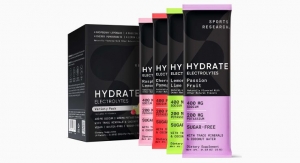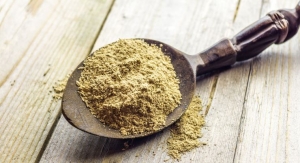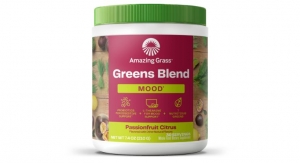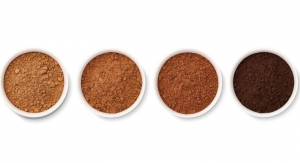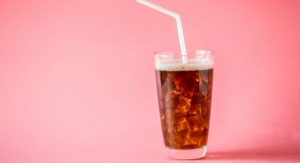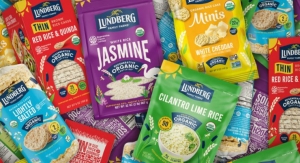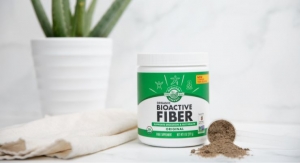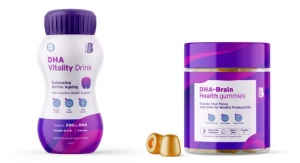By Mike Montemarano, Associate Editor04.28.22
Lower interest in traditional dietary supplement formats such as capsules and tablets, along with a preference for gummies, shots, drinkables, and snack-like delivery formats, is one of the biggest market drivers among consumers.
With pill-fatigue and newer, attractive options that appeal to consumer demand for novelty and convenience, experts predict that non-conventional delivery formats will continue to generate excitement and capture greater market share.
While innovation through delivery formats can be part of a successful brand strategy, there can also be unexpected challenges in creating an efficacious and appealing product. At SupplySide East 2022 in Secaucus, NJ experts offered advice for companies to consider when branching out into new delivery territories.
The Checklist
Wilson Lau, vice president of NuHerbs, a specialist in Chinese herbal ingredients, discussed important benchmarks to consider. He offered two of the company’s new products as case studies: extract-infused coffee pods and strips containing a sleep support combination of melatonin and herbs from Traditional Chinese Medicine.
To ensure that a product will deliver on consumer expectation, “match any given delivery form to the need state—the ‘how’ and ‘when’ people will be taking a product,” Lau said.
One must consider the benefits and drawbacks of working with a certain delivery form, as well as the manufacturer that makes this delivery vehicle, Lau added. Finally, ensure that an ingredient can remain both efficacious and tolerable in this new delivery format.
“Most proprietary ingredients on the market were developed for capsules,” Lau said. “For smaller formats, efficacy might require too large of a dose, and there are major issues with dissolving certain ingredients into water.”
NuHerbs’ Good Morning Sunshine is infused with a red ginseng extract, in a K-Cup. “It is made in a facility that manufactures coffee,” he said. “We originally wanted to use a dry extract powder, but that wasn’t possible; the uniformity the blenders there could achieve wasn’t the same as a dietary supplement facility. We used flavor lines to ensure that a precise dose is available per cup.”
A key challenge was that the dose be consistently at an efficacious level, “and making sure the ingredient actually makes its way into a person’s system, he said. “The flavoring lines could only serve as a solution once we developed a liquid extract that could survive high heat. So the key issues here were allowing the ingredient to survive high heat, maintaining an efficacious dose, and achieving good taste. It’s not about what’s in the pod, it’s about what’s in the cup. So, it goes back to thinking about whether an ingredient is fit for purpose and suitable for a given delivery form.”
For the company’s Hello Dreams Sleep Strips, the main challenge was to translate the health benefits of two to three capsules worth of an ingredient into a dissolvable tongue strip that had a footprint of approximately 20 mg at maximum.
“We had to develop an herbal extract where we stripped out the polysaccharides that weren’t essential for the intended health benefit,” Lau said. Beyond this, the format called for the extract to have a taste pleasant enough to be accepted by the average person—a feat which only becomes more challenging with increased ingredient potency.
“There are many things we could do with extracts technologically that wouldn’t sell because they’d be way too bitter for the average person,” Lau said.
Lastly, he noted that in certain instances, water-soluble won’t cut it for entry into the mass food market. “Often, we find that things need to be water-soluble and clear in nature; that’s what the average person wants in their drink.”
Meeting Dietary Supplement Definitions: Not as Easy as Meets the Eye
With the anticipation that several finished product companies in the dietary supplements space may soon be experimenting with more novel delivery formats, Ivan Wasserman, managing partner at Amin Talati Wasserman LLP, said that greater attention from regulators might be placed on format-related issues.
Dietary supplements and conventional foods are regulated under different sets of standards, and the agency is concerned about products which pass off as conventional foods that contain ingredients only approved for use in dietary supplements.
“DSHEA (the Dietary Supplement Health and Education Act)—you need to know it, love it, and dream it. You need to know how this legislation defines what a dietary supplement is,” Wasserman said.
There is little legislative history involving the interpretation of what a dietary supplement is by DSHEA’s definition, and there can be room for ambiguity.
“Dietary supplements are intended for ingestion and cannot be represented for use as a traditional food or as a sole item of a meal or the diet,” he noted. The legislation specifically mentions capsules, powders, soft gels, gel caps, and liquid forms. If a product does not meet one of those forms, it is still unlawful to be represented for conventional food use.
Dietary supplements need to be fully ingested, and so, many delivery formats on the market today are in a bit of a gray area when it comes to meeting the definition, Wasserman said. Those in the “maybe” category include sprays, lozenges, chewing gums, or any supplement that instructs the user to put it under the tongue.
“Factually, a product might function as a dietary supplement, but with the FDA, it’s more about what you say. If you mention the oral mucosa, or say the word sublingual, FDA doesn’t like it. A good argument can be made, however, if you instruct users to swallow the product. It’s also important to say where the effect of a given product takes place. So, if you say that your product can have an effect pre-digestion, that could land you in trouble with the FDA,” Wasserman said.
He pointed to a guidance document that FDA issued on the subject of energy drinks, which he said largely showed the agency is primarily concerned with the representation of products, more so than formulations. With the advent of more food-like dietary supplements, this will likely be the key area of potential enforcement focus.
In the guidance document, the agency listed the factors it would consider when determining if a liquid dietary supplement meets its criteria and is not misleading: labeling; advertising; product name; packaging; serving size; recommended daily intake; recommendations and directions for use; marketing practices; and other representations of a product.
“It’s a very interesting read, and while it’s beverage-specific, this could be applied to other areas,” Wasserman said. “Talking about a product being refreshing, delicious, or hydrating—words normally associated with drinks or foods—could be an issue. If you call yourself a drink, like a milk, or a soda, FDA will say the product is a food. If your can sort of looks like a soda can, in terms of graphics and size, they’d take that into consideration over whether or not a given product is a conventional food.”
When it comes to recommended serving size, “if you say ‘take one shot’ or ‘drink half of a can’ that’s a supplement kind of thing. But if the directions say, ‘you can drink this all day, it’s delicious, drink it as much as you’d like,’ FDA will obviously consider that,” Wasserman continued.
There are some less obvious issues when it comes to marketing that FDA mentioned in this guidance document. Wasserman said. One example is where a product is located in proximity to other foods.
“FDA said that if a retailer, on its own, decides to put your supplement on a shelf with non-supplement products, they’re not going to hold it against a manufacturer,” he said. “But, if there’s evidence that a manufacturer directed a retailer to put something on a shelf with food products, they could use that against you. So, be careful in your communications with retailers.”
With pill-fatigue and newer, attractive options that appeal to consumer demand for novelty and convenience, experts predict that non-conventional delivery formats will continue to generate excitement and capture greater market share.
While innovation through delivery formats can be part of a successful brand strategy, there can also be unexpected challenges in creating an efficacious and appealing product. At SupplySide East 2022 in Secaucus, NJ experts offered advice for companies to consider when branching out into new delivery territories.
The Checklist
Wilson Lau, vice president of NuHerbs, a specialist in Chinese herbal ingredients, discussed important benchmarks to consider. He offered two of the company’s new products as case studies: extract-infused coffee pods and strips containing a sleep support combination of melatonin and herbs from Traditional Chinese Medicine.
To ensure that a product will deliver on consumer expectation, “match any given delivery form to the need state—the ‘how’ and ‘when’ people will be taking a product,” Lau said.
One must consider the benefits and drawbacks of working with a certain delivery form, as well as the manufacturer that makes this delivery vehicle, Lau added. Finally, ensure that an ingredient can remain both efficacious and tolerable in this new delivery format.
“Most proprietary ingredients on the market were developed for capsules,” Lau said. “For smaller formats, efficacy might require too large of a dose, and there are major issues with dissolving certain ingredients into water.”
NuHerbs’ Good Morning Sunshine is infused with a red ginseng extract, in a K-Cup. “It is made in a facility that manufactures coffee,” he said. “We originally wanted to use a dry extract powder, but that wasn’t possible; the uniformity the blenders there could achieve wasn’t the same as a dietary supplement facility. We used flavor lines to ensure that a precise dose is available per cup.”
A key challenge was that the dose be consistently at an efficacious level, “and making sure the ingredient actually makes its way into a person’s system, he said. “The flavoring lines could only serve as a solution once we developed a liquid extract that could survive high heat. So the key issues here were allowing the ingredient to survive high heat, maintaining an efficacious dose, and achieving good taste. It’s not about what’s in the pod, it’s about what’s in the cup. So, it goes back to thinking about whether an ingredient is fit for purpose and suitable for a given delivery form.”
For the company’s Hello Dreams Sleep Strips, the main challenge was to translate the health benefits of two to three capsules worth of an ingredient into a dissolvable tongue strip that had a footprint of approximately 20 mg at maximum.
“We had to develop an herbal extract where we stripped out the polysaccharides that weren’t essential for the intended health benefit,” Lau said. Beyond this, the format called for the extract to have a taste pleasant enough to be accepted by the average person—a feat which only becomes more challenging with increased ingredient potency.
“There are many things we could do with extracts technologically that wouldn’t sell because they’d be way too bitter for the average person,” Lau said.
Lastly, he noted that in certain instances, water-soluble won’t cut it for entry into the mass food market. “Often, we find that things need to be water-soluble and clear in nature; that’s what the average person wants in their drink.”
Meeting Dietary Supplement Definitions: Not as Easy as Meets the Eye
With the anticipation that several finished product companies in the dietary supplements space may soon be experimenting with more novel delivery formats, Ivan Wasserman, managing partner at Amin Talati Wasserman LLP, said that greater attention from regulators might be placed on format-related issues.
Dietary supplements and conventional foods are regulated under different sets of standards, and the agency is concerned about products which pass off as conventional foods that contain ingredients only approved for use in dietary supplements.
“DSHEA (the Dietary Supplement Health and Education Act)—you need to know it, love it, and dream it. You need to know how this legislation defines what a dietary supplement is,” Wasserman said.
There is little legislative history involving the interpretation of what a dietary supplement is by DSHEA’s definition, and there can be room for ambiguity.
“Dietary supplements are intended for ingestion and cannot be represented for use as a traditional food or as a sole item of a meal or the diet,” he noted. The legislation specifically mentions capsules, powders, soft gels, gel caps, and liquid forms. If a product does not meet one of those forms, it is still unlawful to be represented for conventional food use.
Dietary supplements need to be fully ingested, and so, many delivery formats on the market today are in a bit of a gray area when it comes to meeting the definition, Wasserman said. Those in the “maybe” category include sprays, lozenges, chewing gums, or any supplement that instructs the user to put it under the tongue.
“Factually, a product might function as a dietary supplement, but with the FDA, it’s more about what you say. If you mention the oral mucosa, or say the word sublingual, FDA doesn’t like it. A good argument can be made, however, if you instruct users to swallow the product. It’s also important to say where the effect of a given product takes place. So, if you say that your product can have an effect pre-digestion, that could land you in trouble with the FDA,” Wasserman said.
He pointed to a guidance document that FDA issued on the subject of energy drinks, which he said largely showed the agency is primarily concerned with the representation of products, more so than formulations. With the advent of more food-like dietary supplements, this will likely be the key area of potential enforcement focus.
In the guidance document, the agency listed the factors it would consider when determining if a liquid dietary supplement meets its criteria and is not misleading: labeling; advertising; product name; packaging; serving size; recommended daily intake; recommendations and directions for use; marketing practices; and other representations of a product.
“It’s a very interesting read, and while it’s beverage-specific, this could be applied to other areas,” Wasserman said. “Talking about a product being refreshing, delicious, or hydrating—words normally associated with drinks or foods—could be an issue. If you call yourself a drink, like a milk, or a soda, FDA will say the product is a food. If your can sort of looks like a soda can, in terms of graphics and size, they’d take that into consideration over whether or not a given product is a conventional food.”
When it comes to recommended serving size, “if you say ‘take one shot’ or ‘drink half of a can’ that’s a supplement kind of thing. But if the directions say, ‘you can drink this all day, it’s delicious, drink it as much as you’d like,’ FDA will obviously consider that,” Wasserman continued.
There are some less obvious issues when it comes to marketing that FDA mentioned in this guidance document. Wasserman said. One example is where a product is located in proximity to other foods.
“FDA said that if a retailer, on its own, decides to put your supplement on a shelf with non-supplement products, they’re not going to hold it against a manufacturer,” he said. “But, if there’s evidence that a manufacturer directed a retailer to put something on a shelf with food products, they could use that against you. So, be careful in your communications with retailers.”




